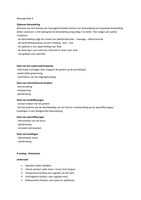Class notes
Meiosis
- Course
- Biology
- Institution
- 11th Grade
Explains meiosis in depth including homologous pairs, terms for eac part of the cell, the names of each process(egg and sperm), and the phases of meiosis and how it is different from mitosis
[Show more]












